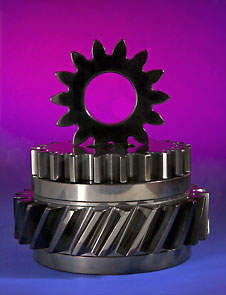Tecvac, a surface engineering specialist based in Cambridge, is advocating the application of diamond-like carbon coating, Diamolith, to improve the endurance and performance of critical components. The Wallwork Group subsidiary has introduced a service for the application of the high resistance low friction surface treatment for manufacturers throughout the UK.

Business development manager, Ian Haggan explained, "Applications arise in a diverse range of industries, from engineering, automotive and aerospace to paper and foil stamping, plastic moulding, tablet making and medical devices."
In engineering and aerospace, wear components such as gears and camshafts are both hardened and made more lubricious so that their performance and working life is greatly extended. Likewise treatment of moulding tools and punching dies in paper, film and foil manufacture will prolong life and increase product quality and yield by preventing sticking and binding. This increases yield, quality and avoids the costs of re-work and scrap.
Applications also arise in tablet production for the easy release of product from dies as well as the manufacture of implanted medical devices, such as prostheses, where the coating offers good bio-compatibility with no inflammatory response. The low friction and resistance to erosion is also beneficial in improving the life and performance of rotating and bearing components in prosthetic limbs.
Applied by plasma-enhanced chemical vapour deposition (PECVD) at low temperature, the process does not generate sufficient heat to significantly alter the characteristics of the base material. The grey to black amorphous carboncoating gets its characteristics from sp2 and sp3 carbon producing a mix of graphite and diamond structures that give natural surface lubrication and exceptional hardness. The coatings can be applied to many materials including steel, aluminium, titanium and alloys.
Tecvac's research and development department creates bespoke variations on the Diamolith process to address specific technical challenges. This is undertaken in their research and development facility before transfer to a full scale production environment.





